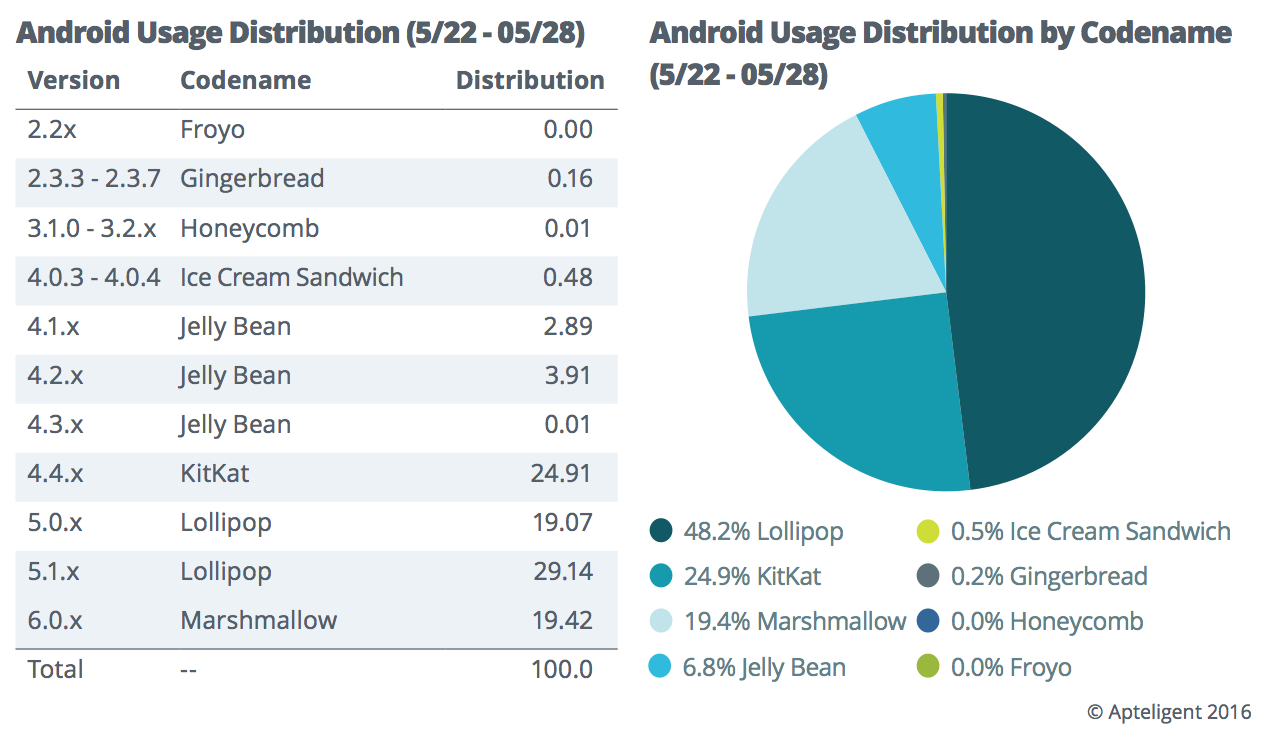Fragmentation is the flaming torch we have to face each time a discussion about Android updates or development is started. Google releases monthly distribution numbers of its operating system, which detail the percentages of devices running a certain version of the OS that have visited the Play Store in the past 7 days. They're usually met with collective groans as Froyo and Gingerbread cling on to dear life month after month.
But as Apteligent's monthly data report points out, Google doesn't take into consideration two important factors: devices that don't have the Play Store installed (ie Chinese handsets mostly) and device usage. A phone may access the Play Store, but it may not be actively used. Once that's taken into account, the image shifts greatly and you can see that there are far less devices in active use that are still running older versions of Android.
As the table and graph at the top of the post show, Android usage distribution puts Lollipop at around half of the devices (vs. ~35% in Google's June numbers) and Marshmallow at almost double what Google says (19.4% vs. 10.1%). Apteligent's usage distribution drops KitKat from around 31% in Google's stats to roughly 25%, Jelly Bean from ~19% to 6.8%, and shows that everything prior (ICS, Honeycomb, Gingerbread, and Froyo) is practically irrelevant.
Now sure, these are numbers taken from Apteligent's report, which is based on devices that have apps with the Apteligent SDK installed, but they do show a new picture of Android's version distributions. The report compares the three top releases (KitKat, Lollipop, and Marshmallow with 93% of usage base) to iOS' two most important versions (iOS 8 and iOS 9 with 97% of usage base) to conclude that "Android is not fragmented." Or, in my opinion, fragmentation is not as pronounced as you'd think it is.
The report contains a lot more data, including Project Fi device distribution (Nexus 5X 38%, 6P 36%, 6 26%), stats on device-specific crashes (Galaxy Tab 3 10.1 wins the cake) and OS-specific crashes (Android 4.1 is the most unstable while 5.0 and 5.1 are the most stable), Android TV usage compared to Apple TV (it's half), and the manufacturers that release the fastest updates (Samsung, LG, Sony, HTC) compared to those that are super slow (Amazon, Motorola, ZTE). You can read it all by grabbing the PDF here.
Source: Apteligent
Thanks: jay

